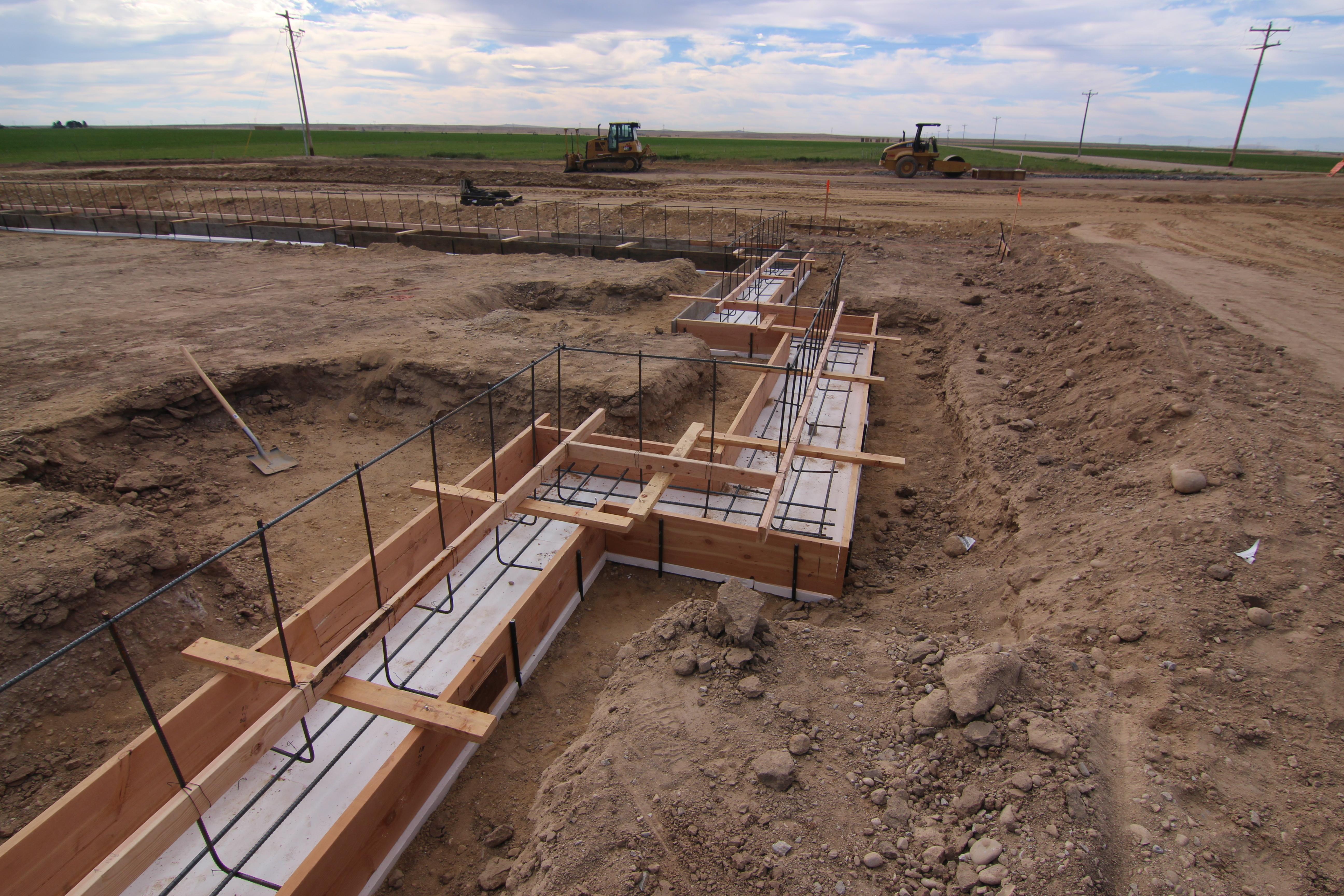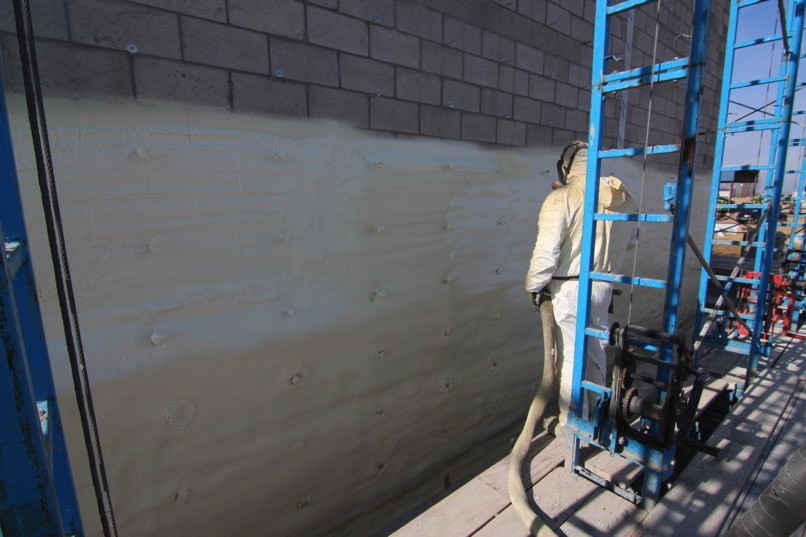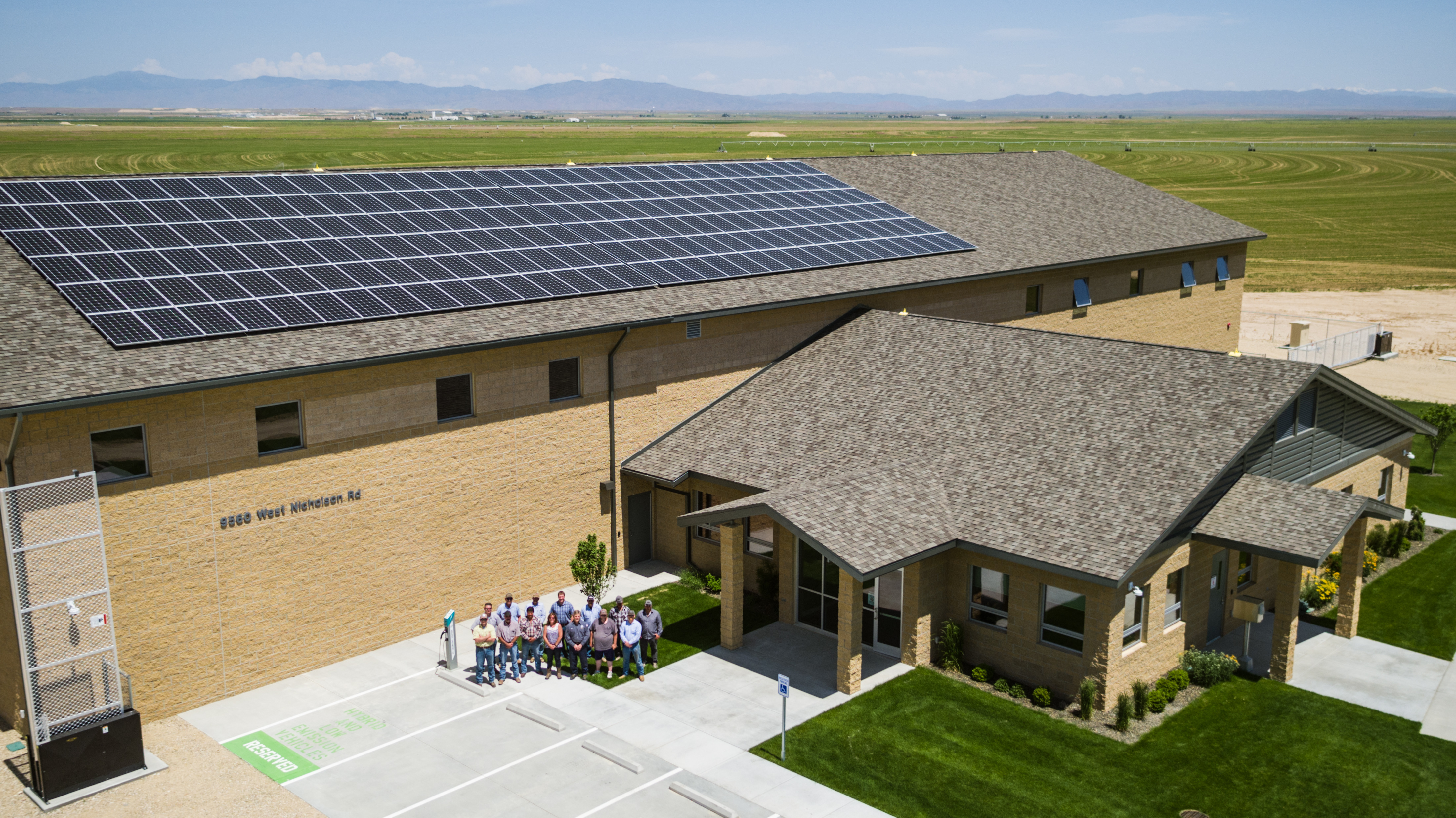Super-Efficient Design for a Super-Efficient Facility
Idaho’s first commercial Net Zero Building, the Twenty Mile South Farm (TMSF) is a 14,000 sq. ft. biosolid processing facility with administrative offices and a maintenance building.
By pushing beyond code through increased envelope insulation, use of ground-source heat pumps, reduced infiltration, and use of a heat exchanger for ventilation, the design team created a facility that has consistently achieved significant energy savings on an annual basis. In 2018, the building had a measured EUI of 10.9 kBtu/ft2/yr—achieving a 25% better EUI than the expected 15.1 kBtu/ft2/yr.
Envelope Insulation
TMSF is designed with a structural CMU wall with 8” blocks. More efficient than filling the blocks with foam inserts (a typical construction detail), the exterior is coated with a 4” continuous layer of closed-cell spray polyurethane foam (ccSPF), resulting in an R-27 wall assembly.To avoid thermal bridging, the design team used fiberglass clips and screws, and low conductivity brick ties instead of the typical steel Z-girts.
This building features comprehensive envelope insulation, with R-14 spray foam in the attic, and R-60 blown-in insulation for the roof. The R-8 window assemblies feature a U-factor three times higher than IECC 2012 requirements. The doors have thermal breaks with insulated frames, and even the slab sits on a continuous layer of R-14 Geofoam, with R-10 beneath the footings.

Ground-Source Heat Pumps
The TMSF is located in a rural area and had room to install the horizontal ground-source loop to provide a heat source/sink for the water-source heat pumps in the buildings. This approach was far less expensive than a vertical ground loop. The water loop is managed with circulating pumps, which are equipped with an electronically commutated motor (ECM) to vary the flow as needed. The heat pumps heat or cool the mixed air as needed, while rejecting thermal loads to the ground-source water loop. Each of the heat pumps use modulating compressors and feature much higher cooling efficiencies than code requires.
Reduced Infiltration
The design team set an air tightness target of 0.065 CFM75/ft2—6 times tighter than IECC 2012 requirements. After construction, the air tightness level was tested and verified at the site. Instead of airtight drywall or polyethylene vapor barrier, the design used fluid-applied or fully adhered air-barriers with taped/sealed structural sheathing. This resulted in a continuous air barrier from the footing up the wall and to the roof. The dampers in the plans are specified as ultra-low-leakage (1CFM/ft2 at 1” w.g.), which, depending on the damper, is either 4 or 20 times tighter than IECC 2012 requirements.

Heat Exchanger
With an envelope this tight, the only air intake must be carefully managed. The TMSF uses a dedicated outdoor air system (DOAS) so the only air intake is for ventilation. All of the ventilation passes through an efficient heat exchanger to pre-condition the air before it enters the building. IECC 2012 requires an (energy-recovery ventilator) ERV for 100% outdoor airflows above 5,000 CFM. The TMSF has an airflow of 900 CFM, which makes it exempt from having ERV—but one is installed anyway. The ERV installed at the site has an effectiveness of 75%, which is significantly higher than the 50% effectiveness required by code. The rest of the heating and cooling is managed by the water-source heat pumps.
To learn more about TMSF, visit cityofboise.org/departments/public-works/twenty-mile-south-farm.

